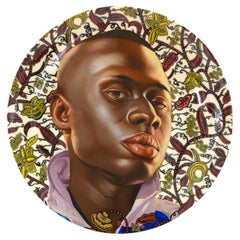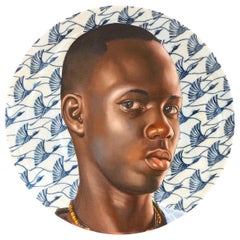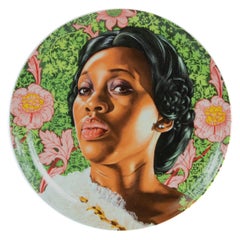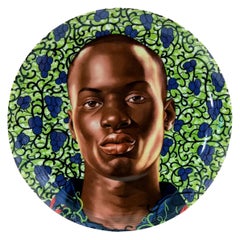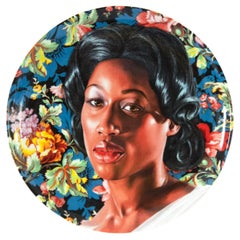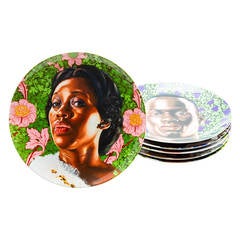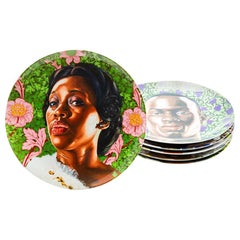Kehinde Wiley Plates
2010s North American Porcelain
Porcelain
2010s North American Porcelain
Porcelain
2010s North American Porcelain
Porcelain
2010s North American Porcelain
Porcelain
2010s North American Porcelain
Porcelain
Early 2000s Contemporary Portrait Prints
Ink, Mixed Media, Board, Laid Paper, Lithograph, Offset
Recent Sales
2010s North American Dinner Plates
Porcelain
2010s North American Dinner Plates
Porcelain
2010s North American Dinner Plates
Porcelain
2010s North American Porcelain
Porcelain
2010s North American Porcelain
Porcelain
2010s North American Porcelain
Porcelain
2010s North American Porcelain
Porcelain
2010s North American Porcelain
Porcelain
2010s North American Porcelain
Porcelain
2010s North American Porcelain
Porcelain
2010s North American Porcelain
Porcelain
2010s North American Porcelain
Porcelain
People Also Browsed
2010s Contemporary Figurative Paintings
Canvas, Oil
Antique 16th Century Cambodian Ceramics
Ceramic
2010s American Mid-Century Modern Table Lamps
Brass
21st Century and Contemporary Contemporary Mixed Media
Textile, Paint, Mixed Media
2010s Contemporary Figurative Prints
Archival Ink, Inkjet
1990s Contemporary Prints and Multiples
Screen
1950s American Modern Figurative Paintings
Watercolor
21st Century and Contemporary Polish Stools
Stainless Steel
Early 2000s Contemporary Figurative Prints
Cotton, Mixed Media, Screen
21st Century and Contemporary Contemporary Mixed Media
Canvas, Charcoal, Mixed Media, Acrylic
1990s Expressionist Figurative Prints
Screen
2010s Contemporary Figurative Prints
Inkjet
2010s North American Contemporary Art
Maple
21st Century and Contemporary Contemporary Mixed Media
Canvas, Charcoal, Mixed Media, Acrylic
2010s Pop Art Mixed Media
Metal
2010s American Contemporary Art
Paper
Kehinde Wiley for sale on 1stDibs
Named by Time magazine as one of the 100 most influential people of 2018, American painter Kehinde Wiley (b. 1977) is one of the most widely recognized artists of his generation, best known for re-creating Old Masters works with contemporary Black subjects.
Take, for instance, his large-scale masterpiece Napoleon Leading the Army over the Alps (2005): The painting is nearly identical in both composition and name to Jacques-Louis David’s Bonaparte Crossing the Alps (1800–1), but instead of the French general posed atop a rearing horse, it’s a modern-day Black man, dressed in fatigues and Timberland boots, against a decorative patterned backdrop. Through such paintings and sculptures, Wiley engages in a political act, acknowledging the omission of Black and other nonwhite figures from historical and cultural narratives — especially as seen through the lens of European portraiture — and introducing them as heroes in poses and positions of power.
Born in Los Angeles, California, Wiley discovered his talents as a photorealistic portrait painter as a child, refining them at the San Francisco Art Institute, where he earned his BFA, and at the Yale University School of Art, where he earned his MFA. His art draws from a range of influences; while his paintings are most associated with Old Master portraits, particularly in the Venitian tradition of Titian and Giovanni Battista Tiepolo, Wiley often sets his subjects in front of ornate patterned backgrounds that reference African textiles and Islamic architecture. In 2017, the artist was commissioned by President Barack Obama to paint his official portrait to hang in the National Portrait Gallery in Washington, D.C.
Wiley has garnered numerous accolades, including the U.S. Department of State Medal of Arts, the Brooklyn Museum Asher B. Durand Award for Artistic Achievement, the American Federation for Arts Cultural Leadership Award and the Pratt Legend Award. His works can be found in the collections of acclaimed institutions around the world, including the Brooklyn Museum of Art; the Museum of Contemporary Art, Los Angeles; Walker Art Center in Minneapolis; the Museum of Fine Arts, Boston; and the Zabludowicz Collection in London.
Find art by Kehinde Wiley on 1stDibs.
Finding the Right Porcelain for You
Today you’re likely to bring out your antique and vintage porcelain in order to dress up your dining table for a special meal.
Porcelain, a durable and nonporous kind of pottery made from clay and stone, was first made in China and spread across the world owing to the trade routes to the Far East established by Dutch and Portuguese merchants. Given its origin, English speakers called porcelain “fine china,” an expression you still might hear today. "Fine" indeed — for over a thousand years, it has been a highly sought-after material.
Meissen Porcelain, one of the first factories to create real porcelain outside Asia, popularized figurine centerpieces during the 18th century in Germany, while works by Capodimonte, a porcelain factory in Italy, are synonymous with flowers and notoriously hard to come by. Modern porcelain houses such as Maison Fragile of Limoges, France — long a hub of private porcelain manufacturing — keep the city’s long tradition alive while collaborating with venturesome contemporary artists such as illustrator Jean-Michel Tixier.
Porcelain is not totally clumsy-guest-proof, but it is surprisingly durable and easy to clean. Its low permeability and hardness have rendered porcelain wares a staple in kitchens and dining rooms as well as a common material for bathroom sinks and dental veneers. While it is tempting to store your porcelain behind closed glass cabinet doors and reserve it only for display, your porcelain dinner plates and serving platters can safely weather the “dangers” of the dining room and be used during meals.
Add different textures and colors to your table with dinner plates and pitchers of ceramic and silver or a porcelain lidded tureen, a serving dish with side handles that is often used for soups. Although porcelain and ceramic are both made in a kiln, porcelain is made with more refined clay and is stronger than ceramic because it is denser.
On 1stDibs, browse an expansive collection of antique and vintage porcelain made in a variety of styles, including Regency, Scandinavian modern and other examples produced during the mid-century era, plus Rococo, which found its inspiration in nature and saw potters crafting animal figurines and integrating organic motifs such as floral patterns in their work.
